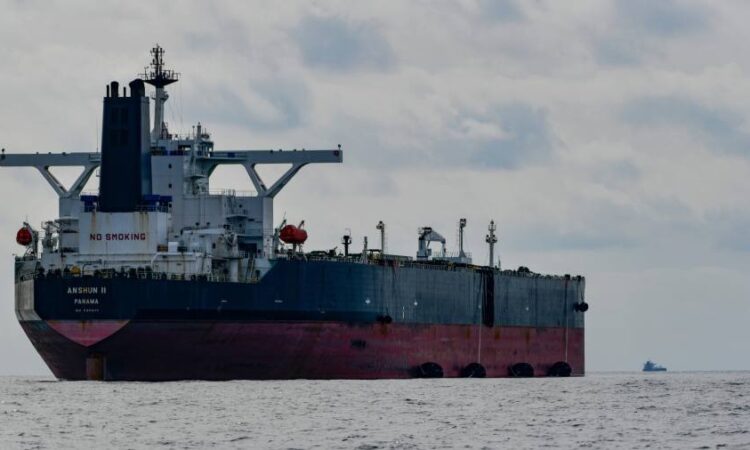
For four months Ukraine’s friends have implemented the sanctions many thought would have the biggest impact on Vladimir Putin’s ability to wage war: a price cap on seaborne Russian oil sales serviced by western shippers, insurers and legal providers. A similar cap on refined products has been added. But now that they have bedded in, the verdict on their effect is mixed at best.
The price caps were weakened by inherent contradictions. They came about at Washington’s behest, when the EU was preparing an outright ban on its companies servicing Russian oil shipments. The Biden administration, fearful of the domestic political repercussions if a sudden removal of Russian supplies from global oil markets were felt at US petrol pumps, successfully pushed its allies to weaken the ban so it only applies above a cap, set at $60/barrel.
These contradictory motivations — squeeze Moscow’s revenues but keep Russian oil flowing — haunt the policy. A case in point is the unseemly display of US officials urging various western oil traders, who had voluntarily stopped shipping Russian oil, back into the business. The major traders had largely removed themselves from the business. But as a result, Russian oil trade has been moving increasingly through a shadow fleet operated by lesser-known companies using ageing vessels.
Still, most sanctioning governments say the policy has generally worked as intended. The Urals benchmark stands at a steep discount to the international Brent price. Despite Russian threats, export volumes seem largely unchanged. The world market has also been well supplied, although the decision last week by Opec and its allies to cut oil production by more than 1mn barrels a day was a surprise. At first glance, Washington has scored a success.
But there are many signs that things are not what they seem. The Urals discount cannot be seen in pricing in Russia’s Pacific ports, where much of the export has been diverted and trades above the cap. It is even unclear how well pricing indices capture real transaction prices. Traditionally based on self-reporting by traders, they are surely less reliable in conditions of economic war given massive incentives to under-report. Even Russia’s ministry of finance is said to worry that oil exporters misstate prices to reduce tax liabilities.
The refined products price cap is more complicated still. Loopholes are created by the common practice of blending and the difficulty of establishing provenance. And many different petroleum derivatives are shoehorned into just two price categories.
The task now is to make the policy work better. Steps would include intensifying monitoring and scrutiny, to establish as far as possible what prices are really paid. More transparency of contracts and transactions would help.
The ambition should also be to adjust the level of the caps downward over time, though the impact of the Opec+ cuts on oil prices will need to be considered. The goal of shrinking Putin’s oil revenues is the right one. The EU sanctions regulations mandate frequent reviews of the cap level, but so far the sanctioning coalition has kicked that ball into the long grass.
There is nervousness in Washington that a lower cap would prod Russia to realise its threat of cutting exports. Western countries with big tanker fleets worry about losing business to rivals in non-sanctioning jurisdictions. So far, the objective of inflicting more pain on Russia than on the west, through the caps, appears to be working. But if western leaders want to continue squeezing Putin, they have to recognise that some risks are unavoidable.






